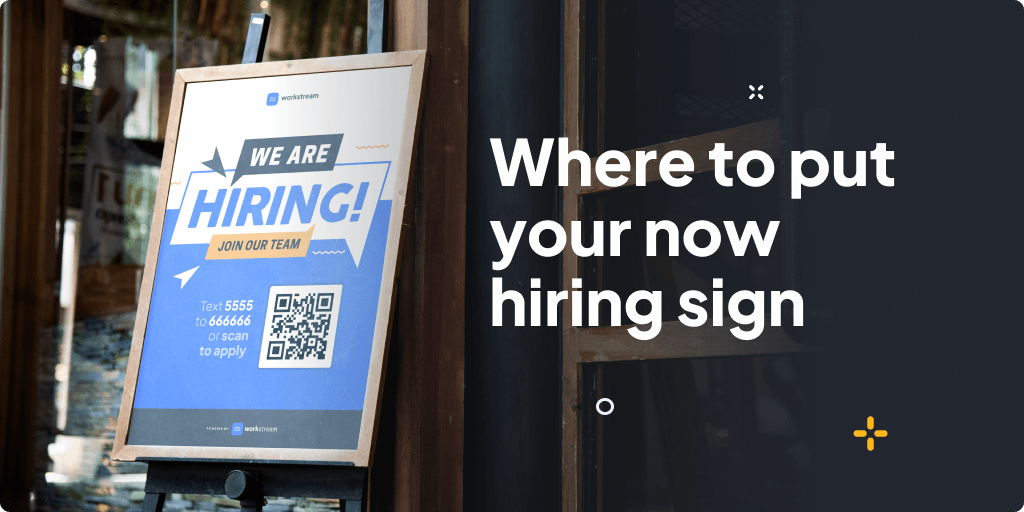Have you ever felt like a sailor lost in the vast sea of active sourcing, scanning through waves of resumes, only to end up with candidates who don't meet your expectations?
You're not alone.
We've all been there. Chasing after potential talents, seeking that elusive perfect fit for an open position - it's a journey filled with hope and occasional frustration. What if I said there's something deeper hidden within this quest?
Intrigued? You should be.
Let's embark on a journey to explore fresh avenues in active sourcing. We'll sketch out how crafting an influential employer brand can be as inviting as a beacon in the night for your company. Next, we'll steer through how tech and data can transform rough recruitment seas into tranquil voyages, ultimately making it easier to hook talented folks who are a perfect fit.
Table of Contents:
-
Understanding Active Sourcing and Its Importance
-
The Definition and Role of Active Sourcing
-
The Efficiency of Active Sourcing
-
-
Strategies for Effective Active Sourcing
-
Utilizing Employee Networks
-
Engaging Previously Declined Candidates
-
-
Building a Strong Employer Brand for Active Sourcing
-
The Role of Employer Branding in Active Sourcing
-
-
Engaging and Attracting Suitable Candidates
-
Crafting Compelling Job Offers
-
-
The Power of Passive Candidates in Active Sourcing
-
Leveraging LinkedIn for Passive Candidate Sourcing
-
-
Maximizing Active Sourcing with Technology Tools
-
The Role of AI in Active Sourcing
-
The Value of Data-Driven Decision Making
-
-
Trends Shaping the Future of Active Sourcing
-
FAQs in Relation to Active Sourcing
-
What is the difference between active sourcing and passive sourcing?
-
What are the top 5 sourcing techniques?
-
What is the difference between active and passive recruiting?
-
What is sourcing vs recruiting?
-
-
Conclusion
Understanding Active Sourcing and Its Importance
The world of recruitment has seen a significant shift from the traditional 'post-and-pray' approach to a more proactive one, called active sourcing. But what exactly is it?
The Definition and Role of Active Sourcing
In simple terms, active sourcing is the strategic hunt for qualified candidates rather than waiting for them to apply. This strategy aims at building relationships with potential talents before an open position even exists.
Apart from filling vacancies faster, active sourcing allows hiring managers to build a talent pipeline - ensuring they have desirable candidates lined up for future roles.
The Efficiency of Active Sourcing
Facts don't lie; sourced candidates are over two times as efficient as those who simply apply. In fact, on average only 1 in every 72 sourced applicants gets hired. A sizable portion indeed when you compare it against traditional methods where hundreds may apply but not fit the outlined candidate profile.
This means less time sifting through unqualified applications and more time spent engaging skilled workers who can bring value to your organization immediately after their job offer acceptance.
Strategies for Effective Active Sourcing
Active sourcing is more than just posting a job and waiting. It's about getting out there, actively seeking the best talent to fill your open positions. This can be done through various sourcing strategies, each tailored to suit your company's unique needs.
Utilizing Employee Networks
Your employees are already brand ambassadors who can play an integral role in widening the talent pool. By turning current employees into active participants in your referral program, you'll have access to potential candidates from their networks too.
A study by LeverTRM, found that organizations could expand their talent pool 10 times simply by recruiting through their employees' networks. This method of proactive recruitment lets companies tap into a sizable portion of the job market they may not otherwise reach.
Engaging Previously Declined Candidates
You've probably had talented potential workers apply but weren't quite right for the position at hand. But don't discard these candidate profiles. Instead, keep them within arm’s reach as part of an outlined candidate persona strategy because they might be perfect for future roles.
This approach makes sure no skilled worker falls through cracks and keeps doors open for those who postpone career decisions or seek jobs later on. Remember: today's runner-up might be tomorrow's superstar hire.
Building a Strong Employer Brand for Active Sourcing
Your employer brand is like the North Star in your active sourcing journey. It guides potential candidates towards you and gives them reasons to stay. A strong employer brand can be an effective magnet, attracting top talents who are seeking jobs.
The Role of Employer Branding in Active Sourcing
In this competitive job market, simply having open positions isn't enough to attract qualified candidates. You need something more—a positive corporate image that makes talented potential workers want to join your ranks.
This is where employer branding comes into play. It's about painting an attractive picture of what it's like working at your company—how you treat employees, opportunities for career growth, the work culture—all these factors influence a candidate’s decision whether or not to accept a job offer from you.
Did you know? Organizations investing in employer branding are three times more likely to make quality hires. And if that wasn’t convincing enough - such investment also cuts turnover by 28%.
If done right, a good employer brand will help turn current employees into brand ambassadors – they become living testimonials of why others should aspire to work with you too. The ripple effect here could greatly expand your talent pool and significantly boost referral program results.
To sum up: An alluring employer branding strategy doesn't just bring desirable candidates—it keeps them too. So start polishing yours today; let it shine brightly across the industry sky.
Engaging and Attracting Suitable Candidates
A vital aspect of active sourcing is engaging with potential candidates, making sure they find your company attractive. A well-crafted job offer plays a crucial role in this process.
Crafting Compelling Job Offers
To attract the best-skilled workforce to fill an open position, you need more than just a simple job description. An enticing job offer starts by understanding the candidate persona - their needs, desires, and career decisions. Remember that talented potential workers are not only looking for competitive salaries but also opportunities for growth and development.
Your company's brand should reflect positively on its corporate image as it helps turn current employees into brand ambassadors who will be keen on referring qualified candidates. It's worth noting that over 60% of candidates check company reviews and ratings before deciding if they're interested in a job at all.
Also consider offering monetary rewards or non-monetary incentives through an employee referral program; these can help increase interest among both actively seeking jobs individuals as well as passive ones.
In today’s challenging job market where skills gap is growing wider every day, focusing on soft skills required might give you access to a sizable portion of desirable candidates others overlook because they focus solely on hard industry knowledge requirements.
The Power of Passive Candidates in Active Sourcing
Passive candidates can be a gold mine for active sourcing strategies. They are the hidden talents, often overlooked because they're not actively seeking jobs.
Yet, these individuals hold great potential. As per Hiretual's research Hiretual, only 36% of the workforce is on an active job hunt at any given time, but an astounding 90% are open to discussing new opportunities.
Leveraging LinkedIn for Passive Candidate Sourcing
Social media platforms like LinkedIn play a pivotal role in tapping into this pool of passive talent. They allow hiring managers to identify and connect with professionals who may not currently be searching but could be enticed by the right job offer.
This proactive recruitment strategy lets you meet applicants' expectations even before they know what those might be.
In fact, building your company's brand as attractive employers through such channels turns current employees into brand ambassadors – referring qualified candidates from their networks - without needing sizable monetary rewards or non-monetary incentives.
Maximizing Active Sourcing with Technology Tools
Active sourcing is a proactive approach to finding top talent. Without the appropriate technology, finding top talent can be a daunting task. Let's look at how tech can assist in improving our search for top talent.
The Role of AI in Active Sourcing
Artificial intelligence (AI) has become an essential tool in active sourcing. AI doesn't just speed up the process; it also improves its accuracy by using algorithms that analyze candidate profiles and match them with job requirements. It’s kind of like having your very own digital Sherlock Holmes.
The Value of Data-Driven Decision Making
Data-driven decision making is another game-changer in active sourcing. This involves collecting data on everything from candidate skills to industry trends, which helps inform our strategies and decisions.
No need for guesswork here. By analyzing this information we're not only able to identify desirable candidates but also anticipate market shifts – essentially becoming hiring soothsayers.
So next time you think about manually scouring LinkedIn or other social media sites for potential hires - consider investing instead in tech tools that will automate these tasks and let you focus on what really matters: connecting with people.
Trends Shaping the Future of Active Sourcing
As we venture into the future, active sourcing is taking on new shapes and forms. Innovations are constantly transforming how hiring managers tap into their talent pipeline to fill open positions with qualified candidates.
The rise of social media as a tool for sourcing strategies is notable. LinkedIn, in particular, has become an invaluable platform for identifying potential candidates who might not be actively seeking jobs but could be lured by a compelling job offer. A LinkedIn study suggests that a sizable portion of talents share career decisions here before anywhere else.
A focus on soft skills required for each role now takes precedence alongside technical abilities when building an outlined candidate profile. This shift ensures companies attract more rounded individuals capable of adapting quickly to changing industry trends.
To meet applicants' expectations better and make the company attractive, there's been a surge in offering monetary rewards or non-monetary incentives through employee referral programs. Not only does this help acquire skilled workers from trusted sources but also helps turn current employees into brand ambassadors boosting positive corporate image.
Beyond these practices though lies one significant trend - proactive recruitment even without immediate vacancies to fill up. This approach keeps organizations ahead in securing the best-skilled workforce while preventing them from scrambling when gaps suddenly appear due to unforeseen circumstances like resignations or retirements.
FAQs in Relation to Active Sourcing
What is the difference between active sourcing and passive sourcing?
Active sourcing means you're proactively hunting for candidates, while passive sourcing involves waiting for applicants to come to you.
What are the top 5 sourcing techniques?
The best five techniques include leveraging employee networks, re-engaging declined candidates, building a strong employer brand, creating compelling job offers and using professional platforms like LinkedIn.
What is the difference between active and passive recruiting?
In active recruiting, recruiters reach out directly to potential hires. Passive recruiting waits for interested candidates to apply on their own initiative.
What is sourcing vs recruiting?
Sourcing focuses on finding qualified individuals who could fill roles. Recruiting involves persuading these individuals to actually apply for those positions.
Conclusion
Active sourcing is no easy voyage, but the rewards are worth it. It's all about being proactive, engaging with your talent pool before a position even opens up.
A strong employer brand lights the way for potential candidates. By projecting a positive corporate image and having an attractive employee referral program, you become a magnet for top talents.
Craft compelling job descriptions to hook suitable candidates right from the start. Use clear communication strategies that meet applicants' expectations to keep them interested.
Tech tools and data-driven decision making can transform active sourcing into smooth sailing. Embrace these resources; they're your compass in this recruitment journey.
The future of active sourcing is bright with continuous learning and adaptation at its helm - make sure you’re on board!



